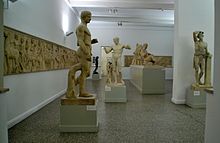
Husum is the capital of the Kreis (district) Nordfriesland in Schleswig-Holstein, Germany. The town was the birthplace of the novelist Theodor Storm, who coined the epithet "the grey town by the sea". It is also the home of the annual international piano festival Raritäten der Klaviermusik founded in 1986.

Johann Michael Adolf Furtwängler was a German archaeologist, teacher, art historian and museum director. He was the father of the conductor Wilhelm Furtwängler and grandfather of the German archaeologist Andreas Furtwängler.
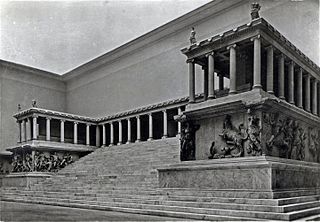
The Pergamon Altar was a monumental construction built during the reign of the Ancient Greek King Eumenes II in the first half of the 2nd century BC on one of the terraces of the acropolis of Pergamon in Asia Minor.

The Altes Museum is a listed building on the Museum Island in the historic centre of Berlin, Germany. Built between 1825 and 1830 by order of King Frederick William III of Prussia according to plans by Karl Friedrich Schinkel, it is considered a major work of German Neoclassical architecture. It is surrounded by the Berlin Cathedral to the east, the Berlin Palace to the south and the Zeughaus to the west. Currently, the Altes Museum houses the Antikensammlung and parts of the Münzkabinett. As part of the Museum Island complex, the Altes Museum was listed as a UNESCO World Heritage Site in 1999, in recognition of its testimony to the development of the museum as a social and architectural phenomenon.

Peter Wilhelm Forchhammer was a German classical archaeologist born at Husum in Schleswig.

Johan Georg Forchhammer was a Danish mineralogist and geologist.

Heinrich Brunn, since 1882 Ritter von Brunn was a German archaeologist. He was known for taking a scientific approach in his investigations of classical Greek and Roman art, being credited with introducing the method of determining the date and source of sculptural fragments by way of thorough analysis of the account of anatomic detail.
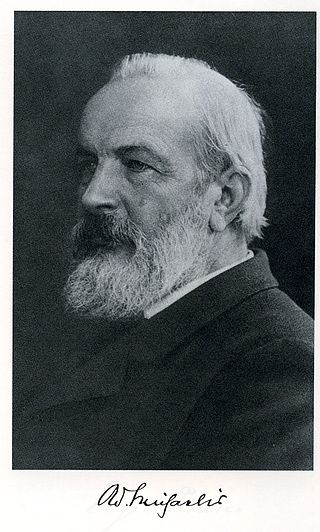
Adolf Michaelis was a German classical scholar, a professor of art history at the University of Strasbourg from 1872, who helped establish the connoisseurship of Ancient Greek sculpture and Roman sculpture on their modern footing. Just at the cusp of the introduction of photography as a tool of art history, Michaelis pioneered supplementing his descriptions with sketches.

The Staatliche Museen zu Berlin are a group of institutions in Berlin, Germany, comprising seventeen museums in five clusters; several research institutes; libraries; and supporting facilities. They are overseen by the Prussian Cultural Heritage Foundation and funded by the German federal government in collaboration with Germany's federal states. The central complex on Museum Island was added to the UNESCO list of World Heritage Sites in 1999. By 2007, the Staatliche Museen zu Berlin had grown into the largest complex of museums in Europe. The museum was originally founded by King Friedrich Wilhelm III of Prussia in 1823 as the Königliche Museen.
The Antikensammlung Berlin is one of the most important collections of classical art in the world, now held in the Altes Museum and Pergamon Museum in Berlin, Germany. It contains thousands of ancient archaeological artefacts from the ancient Greek, Roman, Etruscan and Cypriot civilizations. Its main attraction is the Pergamon Altar and Greek and Roman architectural elements from Priene, Magnesia, Baalbek and Falerii. In addition, the collection includes a large number of ancient sculptures, vases, terracottas, bronzes, sarcophagi, engraved gems and metalwork.

Alexander Christian Leopold Conze was a German archaeologist, who specialized in ancient Greek art.

Antal Hekler was a Hungarian/German classical archaeologist and art historian. He was a member of the Hungarian Academy of Sciences.
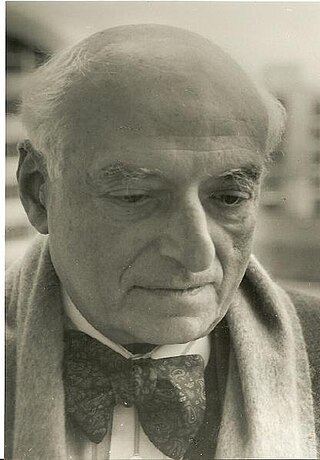
Philipp Pinchas Fehl was an Austrian born American artist and art historian.
Forchhammer is a surname. Notable people with the surname include:
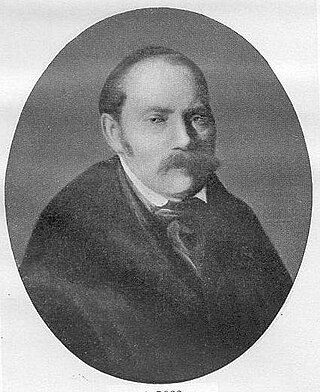
Ludwig Ross was a German classical archaeologist. He is chiefly remembered for the rediscovery and reconstruction of the Temple of Athena Nike in 1835–1836, and for his other excavation and conservation work on the Acropolis of Athens. He was also an important figure in the early years of archaeology in the independent Kingdom of Greece, serving as Ephor General of Antiquities between 1834 and 1836.
Museen am Meer is an association of eight museums in the city centre of Kiel, Schleswig-Holstein, Germany, on the edge of Kiel Fjord. The consortium was founded in 2010.
Max Kunze is a German classical archaeologist.
The Kunsthalle zu Kiel is an art museum in the German city of Kiel. With 2,000 m2 of display space, it is the largest museum in the city. It is north of the city centre on Düsternbrooker Weg. It has a lecture hall, a small cafe and a sculpture garden.
Wilhelm Kraiker was a German classical archaeologist.
Jens Christian Jensen was a German art historian and curator.
This page is based on this
Wikipedia article Text is available under the
CC BY-SA 4.0 license; additional terms may apply.
Images, videos and audio are available under their respective licenses.

